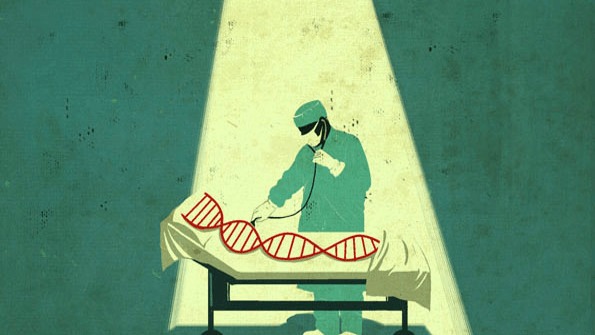For the first time in Australia, whole genome sequencing is available, offering hope to Australian families affected by rare, genetic conditions and with the potential to further scientific knowledge around the world. Whole genome sequencing is the process of analysing a person’s entire genetic material.
A sophisticated sequencing system, the only one in Australia, is now in use at Genome One, a new subsidiary of the Garvan Institute of Medical Research.
This Australian funded service is the result of a two-and-a-half-year development in association with the country’s largest provider of public pathology services, NSW Health Pathology.
The sequencers are used to read all of a person’s genetic information that has been extracted from a blood sample. This information is processed by a super computer and then interpreted through an “information pipeline” developed by a team of 50 highly trained medical specialists, pathologists and scientists.
Previously the most amount of genetic data that could be generated and analysed at one time for clinical use was the whole exome – producing only about 100th of the data available from whole genome sequencing.
The scientific analysis involved in examining a person’s whole genome is mind-boggling, but the information obtained can be life changing. Professor Leslie Burnett of Genome.One, says that we still have much to learn about our genes; “We only know the role of about a quarter of all the genes.”
Our DNA strands are made up of tiny chemical building blocks called nucleotides – these are arranged like letters of the alphabet in long sentences that make up our chromosomes.
Prof Burnett says, “Each human being has 6.4 billion nucleotides making up their genome and we know that on average a person has 3-4 million differences in these when compared to a reference ‘normal’ DNA.
Where it’s available we can use the DNA of the patient’s parents for comparison, which helps to narrow the field.
However, interpreting the information is still a huge job, which is why we need a team of 50 people to develop and manage the pipeline, and about 8-12 weeks to complete the process.”
However, Prof Burnett says that using this technology allows scientists to quickly learn more about genetics, while helping patients.
“The more we do, the faster our knowledge grows leading to a higher diagnosis rate, faster results and better value for the community.”
Because of the resources and cost involved, the team at Genome One are first focusing their efforts where they can make the biggest difference.
They have begun working with patients, who have already undergone a ‘diagnostic odyssey’ of extensive testing without a diagnosis being reached.
These people are the most likely to benefit from whole genome sequencing, which can spot very rare known genetic conditions as well as discovering new genetic conditions.
“Barely a week goes by that we don’t come across something we haven’t seen before,” says Prof Burnett, “Put simply, this test can provide the answers that no other test is capable of.”
Not only can whole genome sequencing provide a diagnosis for patients who have run out of options, it has the potential to open up new avenues of treatment.
Prof Burnett gave the example of a child who was critically ill with a genetic condition. Genome sequencing revealed an error in a gene that seemed to explain the condition.
This gene had also been associated with a different disease, which had a drug treatment available. It had never been tried in the child’s condition. That medication was approved for use with the young patient who responded well. The treatment would never have been thought of without the data obtained through sequencing the child’s genome.
This type of knowledge can save lives, and not just in Australia. As soon as discovery of a new condition is made, the Genome.One team can seek consent from the patient to share this new knowledge with other doctors and scientists in the field. In this way the team’s work has significance far beyond each individual patient.
The team is already looking at the next area where they can focus testing for the greatest impact. These include conditions with known genetic elements that are still difficult to diagnose in other ways, such as sudden cardiac deaths and inherited kidney conditions.
Whole genome sequencing has vast potential including development of new diagnoses and treatments for the future and better understanding of conditions that are not yet known to be genetic.
Prof Burnett says the impact of this technology can be likened to that of antibiotics, which revolutionised the treatment of bacterial infections, saving millions of lives.
“We now have the ability to reach in and understand the causes of disease, and offer hope for so many families and individuals.”
Image credit: http://drbonnie360.com/post/49953643863/big-data-and-genomics-baby-steps

